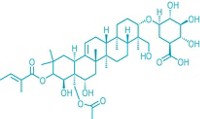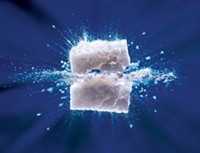Advertisement
Grab your lab coat. Let's get started
Welcome!
Welcome!
Create an account below to get 6 C&EN articles per month, receive newsletters and more - all free.
It seems this is your first time logging in online. Please enter the following information to continue.
As an ACS member you automatically get access to this site. All we need is few more details to create your reading experience.
Not you? Sign in with a different account.
Not you? Sign in with a different account.
ERROR 1
ERROR 1
ERROR 2
ERROR 2
ERROR 2
ERROR 2
ERROR 2
Password and Confirm password must match.
If you have an ACS member number, please enter it here so we can link this account to your membership. (optional)
ERROR 2
ACS values your privacy. By submitting your information, you are gaining access to C&EN and subscribing to our weekly newsletter. We use the information you provide to make your reading experience better, and we will never sell your data to third party members.
Environment
Newscripts
Tastefully Sweet
by Melody Voith
February 1, 2010
| A version of this story appeared in
Volume 88, Issue 5

As Valentine's Day approaches, even people who normally avoid extremely sweet treats will likely find themselves tempted to consume pink-tinged food made almost entirely of sugar. Who hasn't eaten those little candy hearts or cupcakes with messages such as "Be Mine"?
The problem with these confections, observes one food scientist, isn't the sickly sweet messages, but the sickly sweet taste. It's not clear if anything can be done about the flavor of the candy hearts, but cupcake frosting can be improved, according to Jack Fastag, flavor chemist at David Michael Flavors.
Frosting's high sugar content is what gives it structure, but it can also make some flavored frostings over-the-top sweet. The manufacturer could replace some of the sugar, but that might affect the texture, Fastag points out. Another option is to add a SWEETNESS INHIBITOR.
Fastag admits that in these days of nonsugar sweeteners, introducing a product that makes sugar seem less sweet is rather counterintuitive. But, he says, "there are times when you want to reduce the perception of sweetness when sugar cannot be taken out of the product." He offers the more typical example of lactose-reduced milk. Because the lactose is enzymatically broken down into simple sugars, the milk becomes a little sweeter. Adding a sweetness inhibitor makes it taste more like regular skim milk.
"The inhibitor acts directly on the sweetness receptors on your tongue," Fastag explains. "The first time you try it, it's really uncanny," he says, using soda as an example. "You taste some regular soda, then some of the sweetness inhibitor solution. When you try the soda again, it won't taste sweet." But Fastag would not reveal the chemical structure of David Michael's inhibitor.
A paper in the Journal of Food Science reported on research at another flavor firm on the effect of ZINC SALTS in blocking sweetness perception (2003, 68, 1871). R. S. J. Keast of the Monell Chemical Senses Center in Philadelphia, tested a number of zinc salts, already used as nutritional and functional ingredients, to see what effect they have on taste perception. He found that zinc sulfate (ZnSO4) significantly inhibited the sweetness of glucose.
Keast hypothesized that taste receptors are susceptible to protein-zinc complexes because they are composed of amino acids. If zinc binds to taste receptor proteins, it can change the shape of the receptor and prevent it from detecting the presence of sugar.
Still, flavor scientists spend more of their time trying to increase, rather than block, the perception of sweet taste. Now that the natural sweetener REBAUDIOSIDE A, derived from the Stevia rebaudiana shrub (C&EN, July 28, 2008, page 30), has received the thumbs-up from the Food & Drug Administration, the race is on to perfect its use in food and beverages.
On the plus side, rebaudioside A adds no calories. High concentrations, however, impart a bitter aftertaste, sometimes described as licorice-like. The long list of firms reportedly working on the problem includes Cargill, Comax Flavors, Wild Flavors, Purac, and Givaudan.
Purac says its purified lactic acid masks the bitterness and allows food makers to reduce the amount of the pricy sweetener by 15%. Givaudan has taken a biological approach, boasting that it has identified the bitterness taste receptor triggered by rebaudioside A. "Screening of a diverse chemical library has led to a portfolio of more than 20 new best-in-class flavor ingredients effective against rebaudioside A bitterness," the company announced.
So far, none of the firms has admitted to working on stevia-sweetened candy hearts.





Join the conversation
Contact the reporter
Submit a Letter to the Editor for publication
Engage with us on Twitter